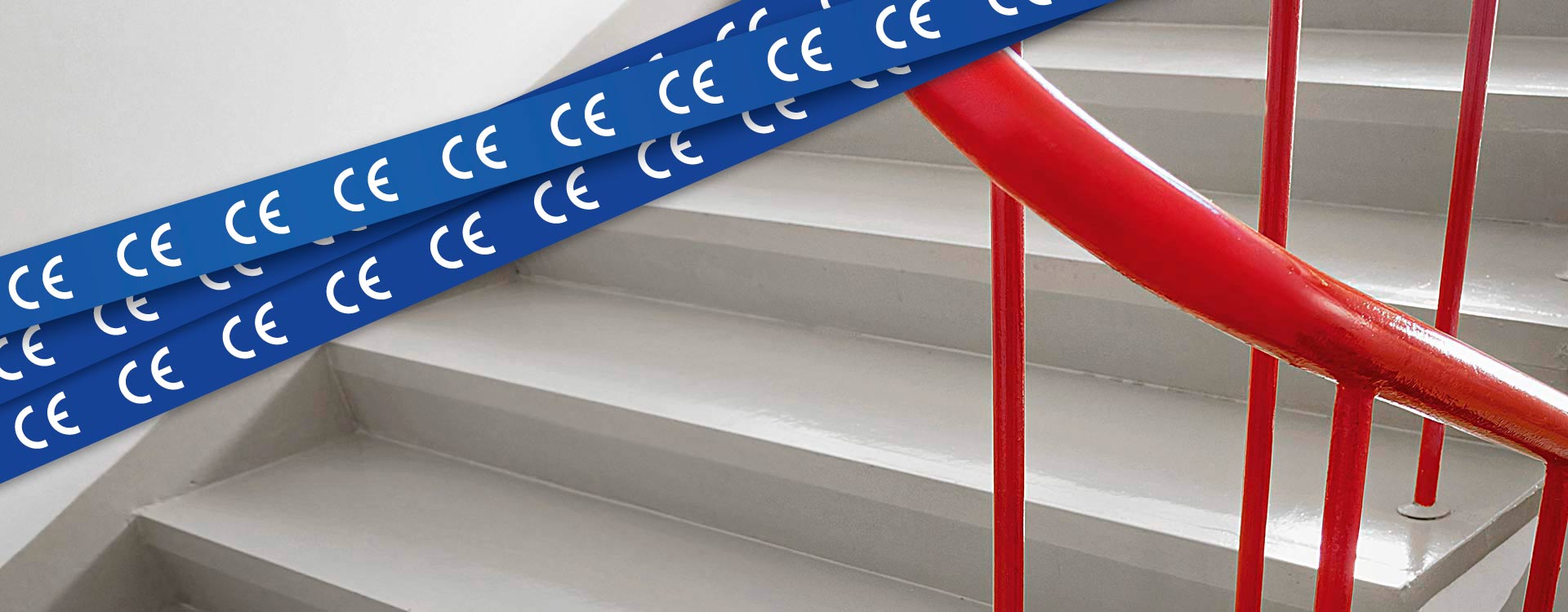New CE marking: functionality of paints is not just sales talk
Teknos’ mineral coatings for outdoor use, paints and coatings for concrete floors, and ready-to-use fillers now feature a new CE marking. Mandatory in all EU countries, the CE marking guarantees that the product performs as promised. For building developers, it provides twice the quality guarantee.
The new Construction Product Directive, which entered into force at the beginning of July 2013, requires that all construction products covered by common products standards and having more than an aesthetic function must feature a CE marking. Establishing eligibility for the CE marking requires that an external body tests the paints and coatings to verify that they perform as promised.
- Before the CE marking was granted, the Technical Research Centre of Finland (VTT) conducted tests to ensure that our paints fulfil the applicable regulations and perform as described on the container. VTT also inspected our quality control facilities to ensure that the quality of each paint batch is checked in the appropriate manner, says Teknos’ Research Manager Jari Salminen.
In addition to initial product testing to establish eligibility for the CE marking, each CE-marked paint product is tested annually.
Double guarantee for construction sites
The new CE marking does not mean major changes in construction sites. Building developers have always trusted the quality of Finnish manufacturer’s paints.
- From the beginning, we have chosen to use products manufactured by known paint industry operators, such as Teknos. Based on experience, we can assume that the products will perform as promised, comments YIT’s Purchasing Manager Jani Tuominen.
- We have always trusted the technical data sheets, says Quality Manager Pekka Kuusio of LTU-Urakointi Oy.
According to Kuusio, the CE marking initially caused some confusion at the work sites. Many assumed that the marking must be on every paint container, but this is not the case. The marking is only mandatory for so-called functional construction products with more than an aesthetic function, such as protecting concrete surfaces. Kuusio adds:
- Since we cleared that up, on-site workers have begun to realise that the marking mainly applies to concrete paints and coatings and ready-to-use fillers.
Construction sites are ultimately responsible for ensuring that suitable products are used in the painting projects, in accordance with regulations. According to Tuominen, above all the CE marking provides a double guarantee on the performance of a paint or coating.
- When the marking is there, we are in the clear. It’s about making sure that the product promise is not just sales talk, but actually verified by a third party.
Facts:
- The new Construction Product Directive entered into force across the EU on 01 July 2013.
- The CE marking became mandatory for all construction products that fall within the sphere of harmonised product standards. If the standards have not been defined, no marking is needed.
- The CE marking will be applied to so-called functional products, such as fire-retardant paints and concrete paints and coatings.
- If the product is intended for aesthetic purposes only, no marking is needed.
